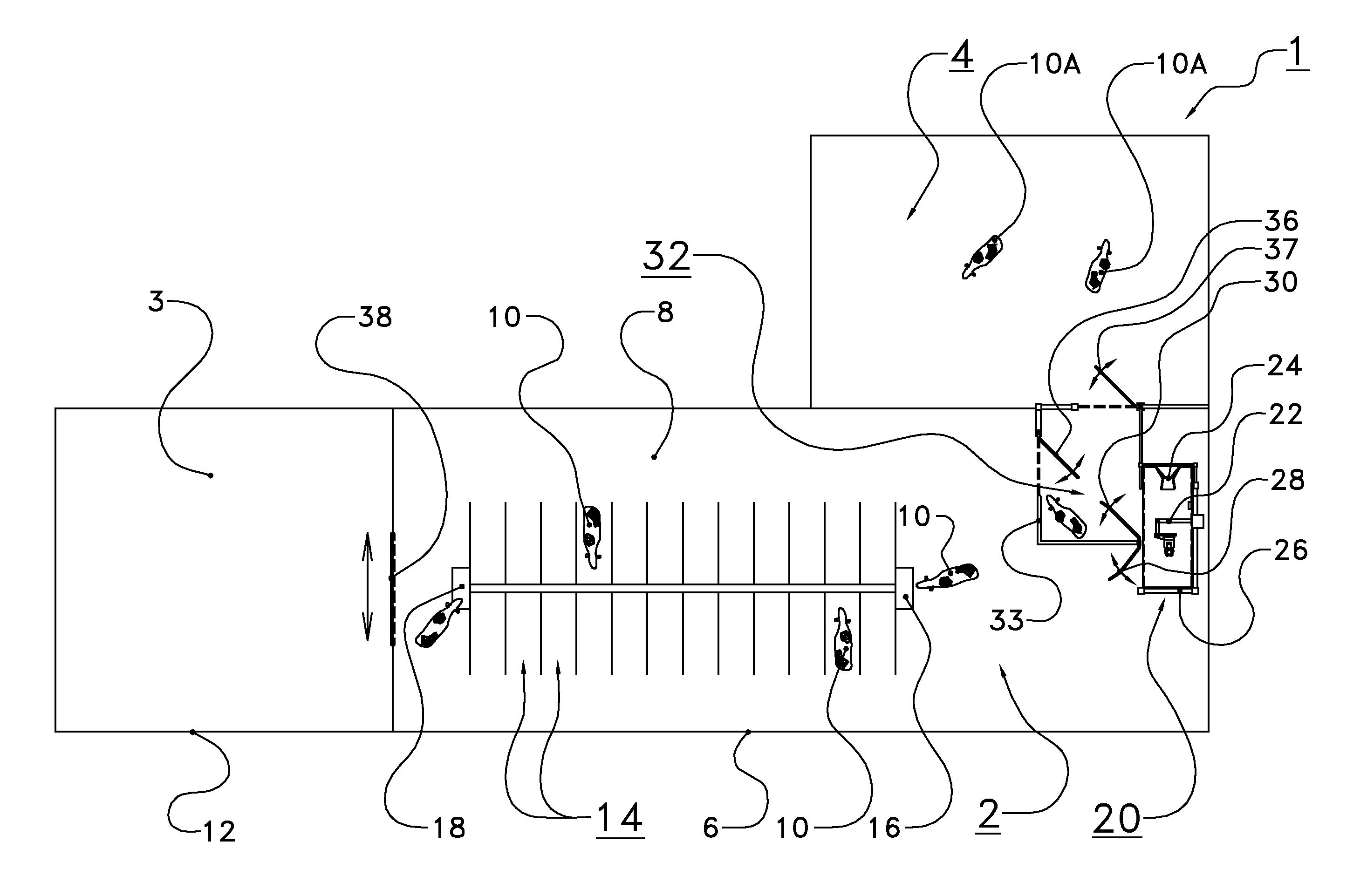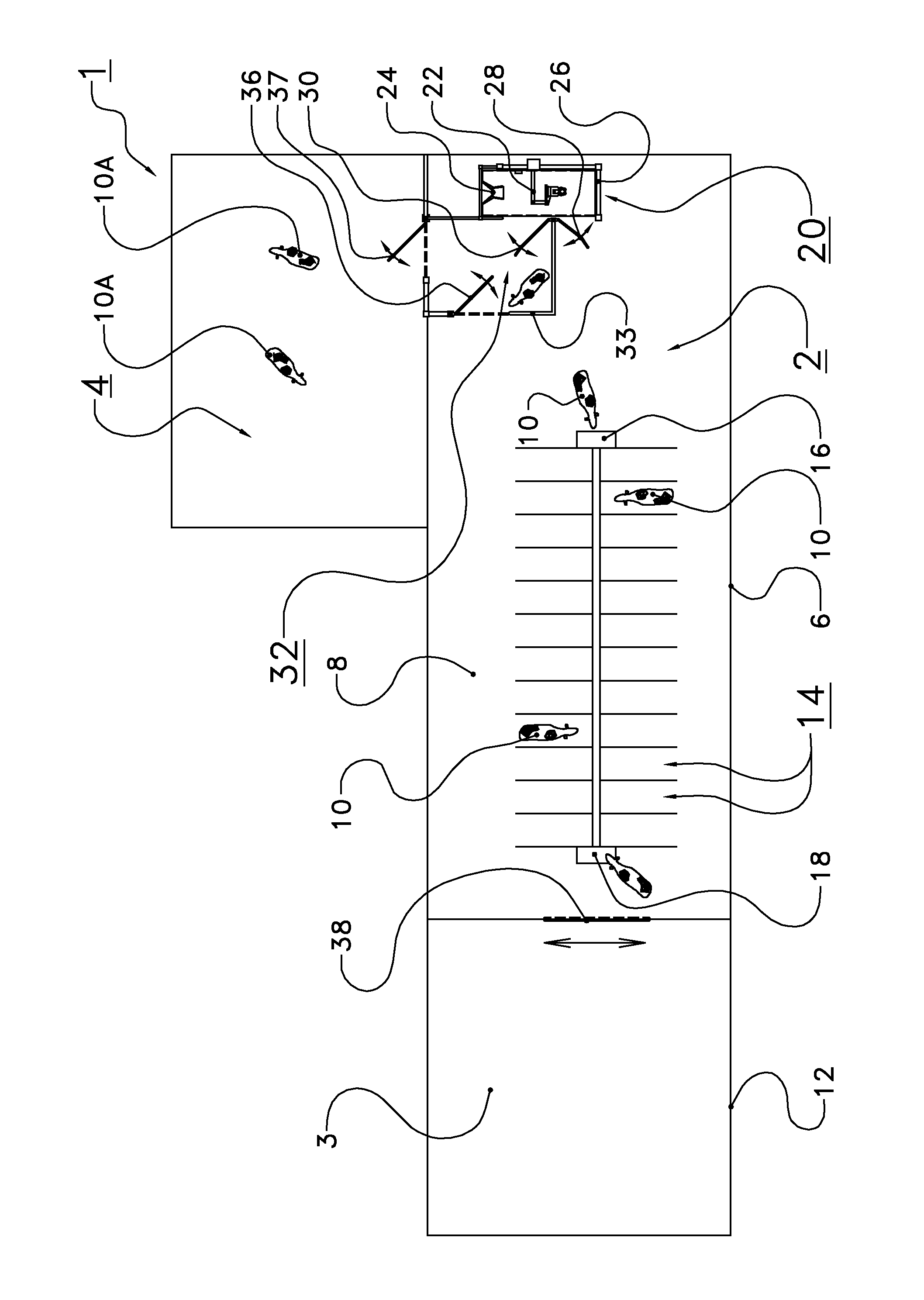Method and system for managing a group of dairy animals
a management method and dairy animal technology, applied in the field of management methods of dairy animals, can solve the problems of disruption of milking behaviour and milk production of dairy animals, the risk that not all of the dairy animals to be separated are actually separated at the planned collection time, etc., and achieves the effects of improving milking interval, improving milking efficiency, and improving milking efficiency
- Summary
- Abstract
- Description
- Claims
- Application Information
AI Technical Summary
Benefits of technology
Problems solved by technology
Method used
Image
Examples
Embodiment Construction
[0038]The following is a description of certain embodiments of the invention, given by way of example only and with reference to the drawings. The system for managing a group of dairy animals 10 according to the invention is indicated in its entirety by reference numeral 1 in FIG. 1. The system 1 comprises a shed area 2 and a grazing area 3 for the dairy animals 10. The shed area 2 is surrounded by a wall 6. The wall 6 delimits an interior area 8 of the shed area 2, in which a plurality of cubicles 14, a concentrated feed trough 16 and a drinking water trough 18 are arranged. The grazing area 3 is delimited by means of a fence 12. The grazing area 3 is provided with grass (not shown). The grazing area 3 can be accessed from the interior area 8 of the shed area 2 via an opening in the wall 6, which can be closed by means of a shed door 38. When the shed door 38 is open, the grazing area 3 and the shed area 2 together form an accommodation area for the group of dairy animals 10. In th...
PUM
 Login to View More
Login to View More Abstract
Description
Claims
Application Information
 Login to View More
Login to View More - R&D
- Intellectual Property
- Life Sciences
- Materials
- Tech Scout
- Unparalleled Data Quality
- Higher Quality Content
- 60% Fewer Hallucinations
Browse by: Latest US Patents, China's latest patents, Technical Efficacy Thesaurus, Application Domain, Technology Topic, Popular Technical Reports.
© 2025 PatSnap. All rights reserved.Legal|Privacy policy|Modern Slavery Act Transparency Statement|Sitemap|About US| Contact US: help@patsnap.com


